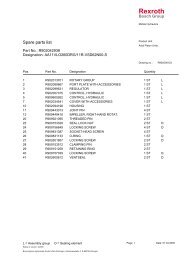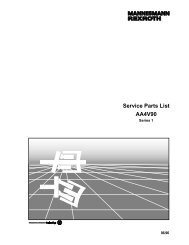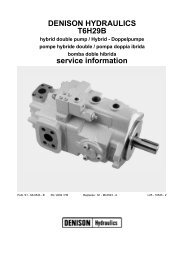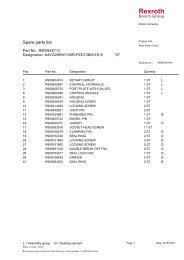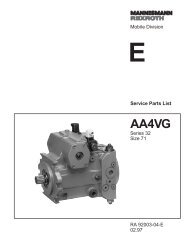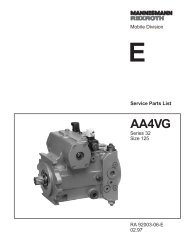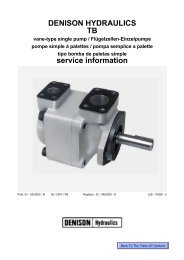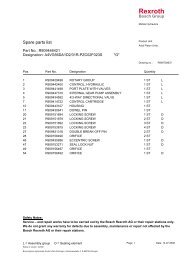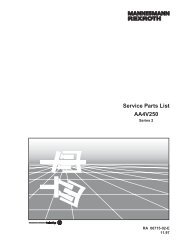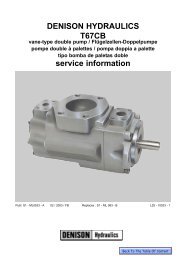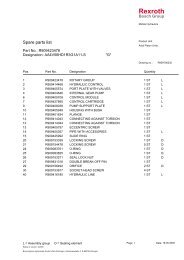LT3-00032-2-A - DDKS Industries, hydraulic components distributor
LT3-00032-2-A - DDKS Industries, hydraulic components distributor
LT3-00032-2-A - DDKS Industries, hydraulic components distributor
You also want an ePaper? Increase the reach of your titles
YUMPU automatically turns print PDFs into web optimized ePapers that Google loves.
TROUBLE SHOOTING<br />
TROUBLESHOOTING<br />
Component problems and circuit problems are often interrelated. An improper circuit<br />
may operate with apparent success but will cause failure of a particular component<br />
within it. The component failure is the effect, not the cause of the problem.<br />
This general guide is offered to help in locating and eliminating the cause of the<br />
problems by studying their effects.<br />
effect of trouble possible cause fault which needs remedy<br />
noisy pump air in fluid leak in suction line<br />
low fluid level<br />
turbulent fluid<br />
return lines above fluid level<br />
gas leak from accumulator<br />
excessive pressure drop in the inlet line from<br />
a pressurized reservoir<br />
suction line strainer acting as air trap<br />
cavitation in fluid too cold<br />
pump or motor fluid too viscous<br />
rotating group<br />
misaligned shaft<br />
mechanical fault<br />
in pump<br />
fluid too heavy<br />
shaft speed too high<br />
suction line too small<br />
suction line collapsed<br />
suction strainer too small or too fine<br />
suction strainer too dirty<br />
operating altitude too high<br />
boost or replenishment pressure too low<br />
replenishment flow too small for dynamic<br />
conditions<br />
faulty installation<br />
distortion in mounting<br />
axial interference<br />
faulty coupling<br />
excessive overhung loads<br />
piston and shoe looseness or failure<br />
bearing failure<br />
incorrect port plate selection or index<br />
eroded or worn parts in the displacement control<br />
erosion on barrel air in fluid see above<br />
ports and port cavitation see above<br />
plate<br />
high wear in excessive loads reduce pressure settings<br />
pump & motor<br />
contaminant<br />
particles in fluid<br />
improper fluid<br />
improper repair<br />
unwanted water<br />
in fluid<br />
reduce speed<br />
improper filter maintenance<br />
filters too coarse<br />
introduction of dirty fluid to system<br />
reservoir openings<br />
improper reservoir breather<br />
improper line replacement<br />
fluid too thin or thick for operating temperatures<br />
range<br />
breakdown of fluid with time/temperature/shearing<br />
effects<br />
incorrect additives in new fluid<br />
destruction of additive effectiveness with chemical<br />
aging<br />
incorrect parts<br />
incorrect procedures, dimensions, finishes<br />
condensation<br />
faulty breather/strainer<br />
heat exchanger leakage<br />
faulty clean-up practice<br />
water in make-up fluid<br />
8



